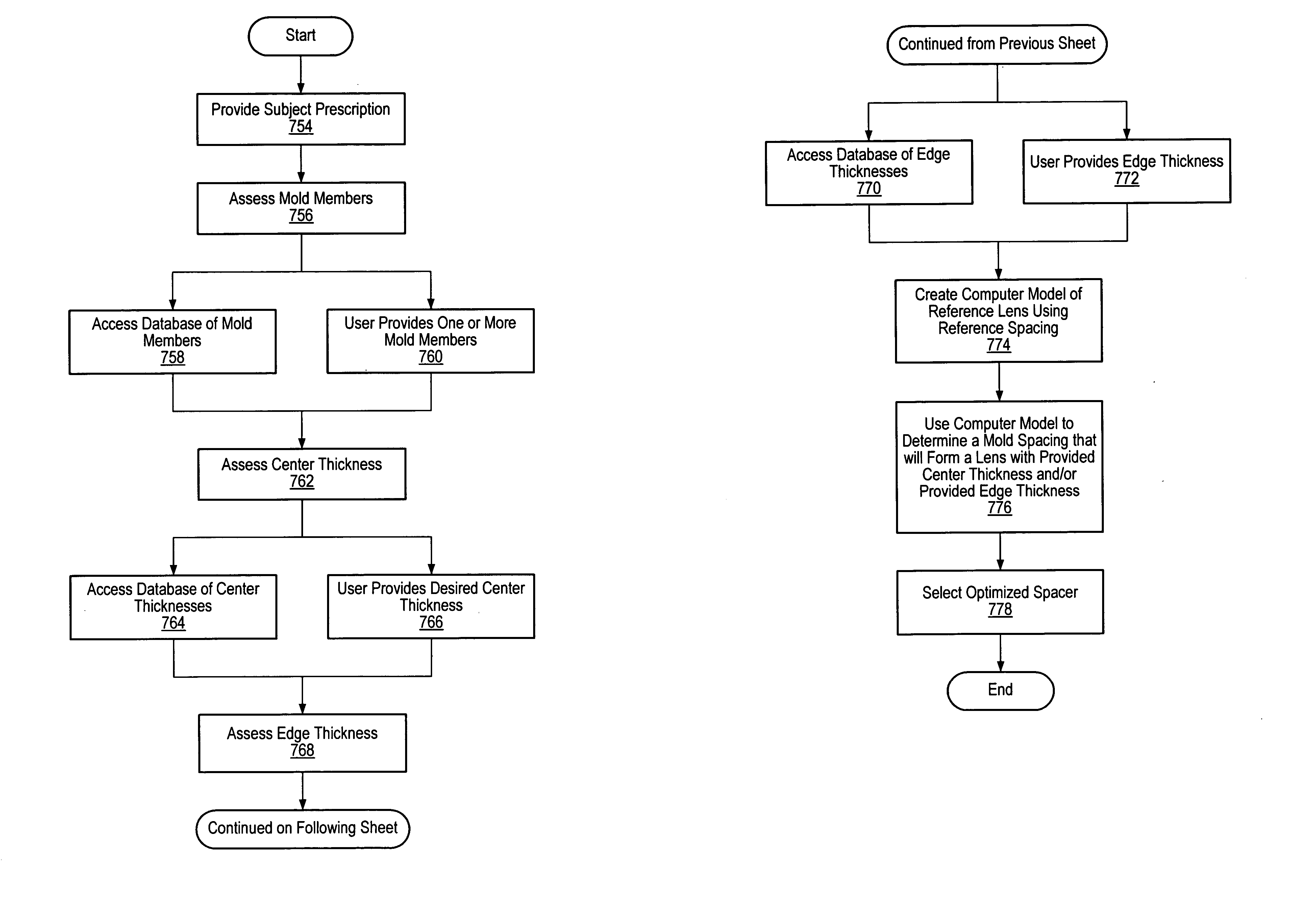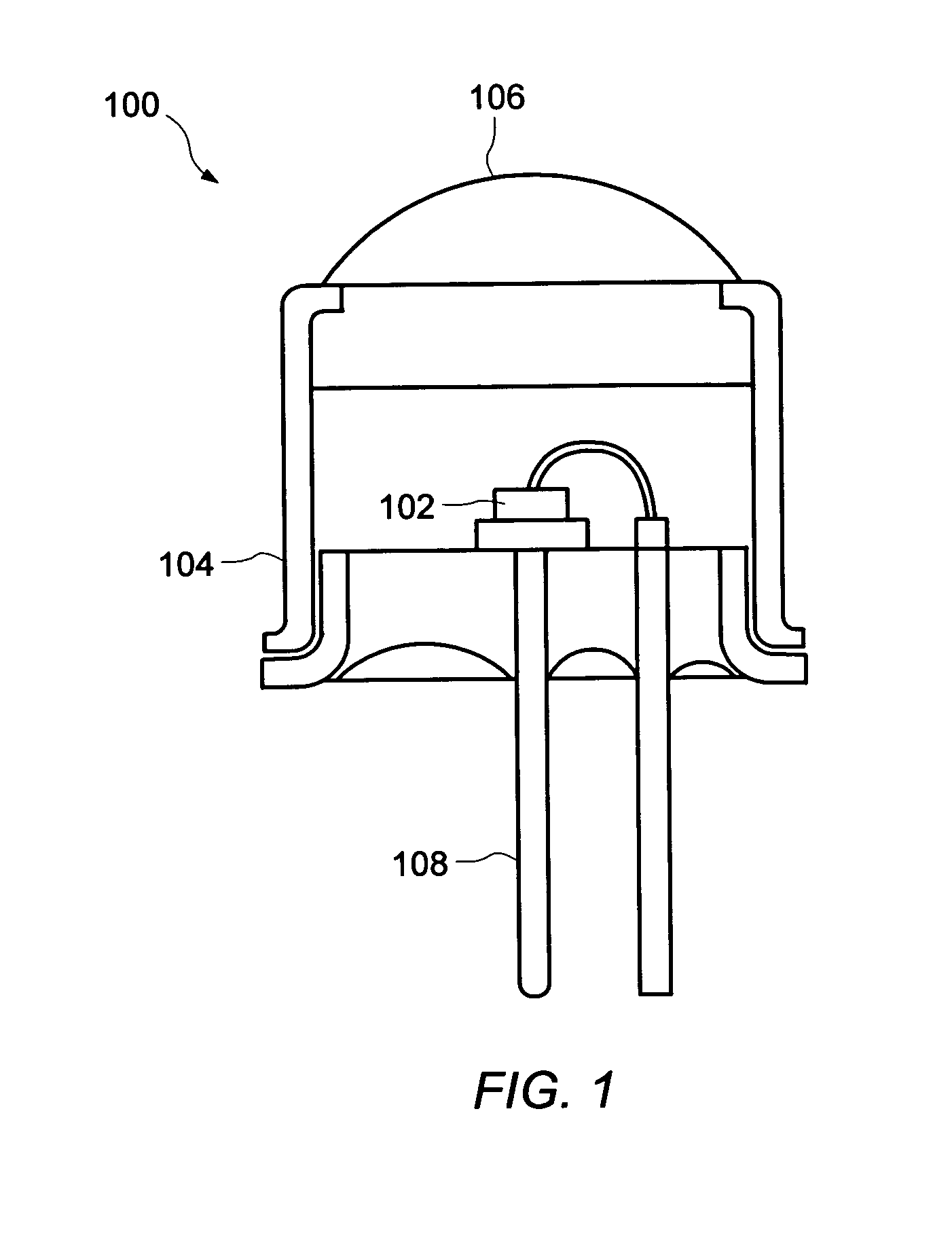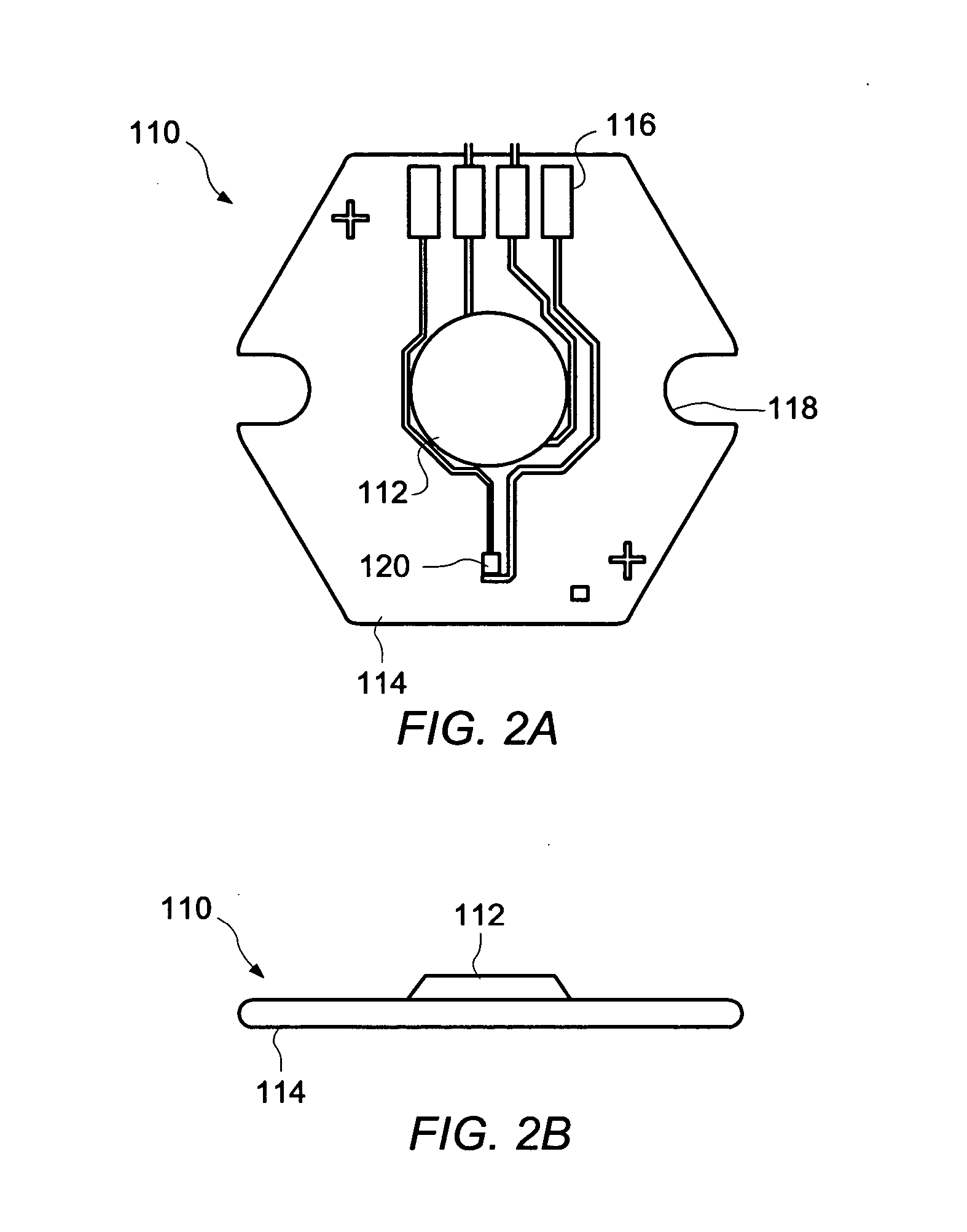Lens forming systems and methods
a technology of lens forming and lens body, applied in the field of eyeglass lenses, can solve the problems of time and labor intensive manufacturing process, less common prescriptions, and increased cost of surfaced lenses
- Summary
- Abstract
- Description
- Claims
- Application Information
AI Technical Summary
Benefits of technology
Problems solved by technology
Method used
Image
Examples
example 1
Two Layer Antireflective Coating with Hardcoat
[0226] In an embodiment, a first antireflective coating composition was prepared including the following materials by weight:
1.19%Nanocryl XP596 0.3%SR-399 0.025%Irgacure 819 0.025%benzophenone 0.025%Darocur 11730.00045%BYK-333 32.8%1-methoxy-2-propanol 32.8%acetone 32.8%isopropanol
BYK-333 is a polyether modified dimethylpolysiloxane copolymer (available from BYK Chemie).
[0227] A second antireflective coating composition was prepared including the following materials by weight:
12.47%Nyacol Ceria 0.11%SR-399 0.01%Irgacure 18487.41%acetone
[0228] A hardcoat coating composition was prepared comprising the following materials by weight:
16.53%% Nanocryl XP596 0.28%%Irgacure 1840.28%benzophenone0.28%Darocure 117327.5%1-methoxy-2-propanol27.5%acetone27.5%isopropanol
[0229] An eyeglass lens coated with antireflective coating layers and a hardcoat layer was prepared by the following method. A front glass mold was cleaned by soak...
example 2
Three Layer Antireflective Coating with Hardcoat
[0232] In an embodiment, a first antireflective coating composition was prepared including the following materials by weight:
1.19%Nanocryl XP954 0.3%SR-399 0.025%Irgacure 819 0.025%benzophenone 0.025%Darocur 11730.00045%BYK-333 32.8%1-methoxy-2-propanol 32.8%acetone 32.8%isopropanol
[0233] A second antireflective coating composition was prepared including the following materials by weight:
9%Nyacol Ceria0.95%SR-3990.05%Irgacure 184 90%ethanol
[0234] A third antireflective coating composition was prepared including the following materials by weight:
22.55%Nyacol Ceria 2.25%SR-399 0.1%Irgacure 184 75.1%ethanol
[0235] A hardcoat coating composition was prepared comprising the following materials by weight:
16.53%% Nanocryl XP596 0.28%%Irgacure 1840.28%benzophenone0.28%Darocure 117327.5%1-methoxy-2-propanol27.5%acetone27.5%isopropanol
[0236] An eyeglass lens coated with antireflective coating layers and a hardcoat layer was...
example 3
Three Layer Antireflective Coating
[0238] In an embodiment, a first antireflective coating composition was prepared including the following materials by weight:
1.19%Nanocryl XP1500 0.3%Nanocryl XP1462 0.025%Irgacure 819 0.025%benzophenone 0.025%Darocur 11730.00045%BYK-333 32.8%1-methoxy-2-propanol 32.8%acetone 32.8%isopropanol
[0239] A second antireflective coating composition was prepared including the following materials by weight:
9%Nyacol Ceria0.95%SR-3990.05%Irgacure 184 90%1-propanol
[0240] A third antireflective coating composition was prepared including the following materials by weight:
10.9%Nyacol Ceria 2.04%SR-399 0.1%Irgacure 18486.96%1-propanol
[0241] An eyeglass lens coated with antireflective coating layers and a hardcoat layer was prepared by the following method. A front glass mold was cleaned by soaking it in a mixture of water, lauryl sulfate and sodium hydroxide for one minute. The mold was removed from this solution, scrubbed, and rinsed thoroughly un...
PUM
| Property | Measurement | Unit |
|---|---|---|
| Nanoscale particle size | aaaaa | aaaaa |
| Fraction | aaaaa | aaaaa |
| Fraction | aaaaa | aaaaa |
Abstract
Description
Claims
Application Information
 Login to View More
Login to View More - R&D
- Intellectual Property
- Life Sciences
- Materials
- Tech Scout
- Unparalleled Data Quality
- Higher Quality Content
- 60% Fewer Hallucinations
Browse by: Latest US Patents, China's latest patents, Technical Efficacy Thesaurus, Application Domain, Technology Topic, Popular Technical Reports.
© 2025 PatSnap. All rights reserved.Legal|Privacy policy|Modern Slavery Act Transparency Statement|Sitemap|About US| Contact US: help@patsnap.com



